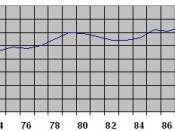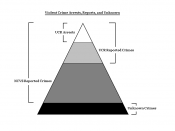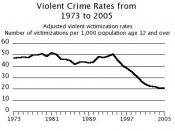Introduction
The Uniform Crime Report statistics suggest that males commit more violent crime than females. The UCR is used to show trends in crime over time (Federal Bureau of Investigation, 2002). The gender difference in violent offenses is illustrated through Social Learning Theory. To understand violent criminal behavior we must examine perceptual thoughts, expectancies, competencies and values. (Bartol, 2002) This paper discusses social roles, the influence of intact or broken homes, and the type of aggression learned. These factors are important when we look at violent crime. Awareness of social problems or antisocial behavior can help early intervention. The social learning theory implies that internal as well as external forces play a significant role in developing behavior. Social theory suggests that people are born with the same abilities and a blank slate waiting to be written on. Children are bombarded with many things that they must learn at a young age.
Through this time and into adolescence there paradigms are continuously being shaped and changed. This is a critical time, and problems at this stage of development, can show up as violent crime later on. The difference in male and female violent crime is a highly correlated with social conditioning.
Position
The gender difference in violent crime did not happen suddenly, it has been around for along time. Social learning differences in males and females are part of the reason why there is such a difference in the amount of crime committed. Looking at the early childhood development is a good place to start to try to understand this difference. Children change and shape in early childhood and adolescent due to social factors. We start to learn and comprehend things at a young age being very much a victim of our environment. Children are taught through their parents and...


